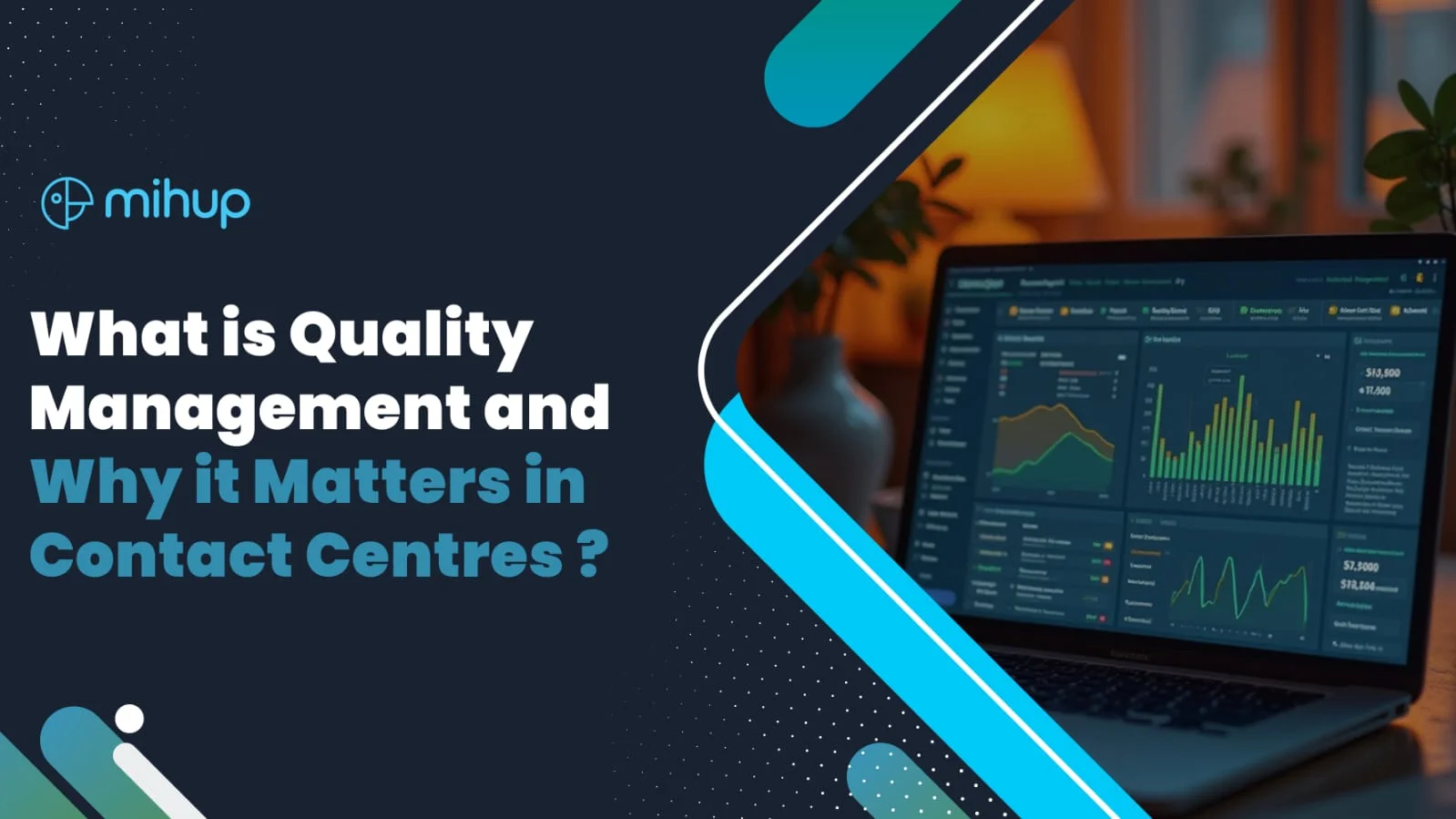In this AI world, data is driving almost every aspect of business. Today, where everything and everyone is connected, organizations are continually looking for new ways to engage with customers and provide a superior level of exceptional service. However, your customers are already talking, the question is, are you listening to the Voice of the customer?
Voice of the Customer (VoC) includes customer needs, wants, and feedback that customers express on every touchpoint with your brand. You can consider VoC to be the stethoscope of your organization – it is the instrument that captures the heart and pulse of customer sentiment, thereby uncovering critical insights that lead to business success.
In the digital age volume of VOC has significantly increased. Customers communicate their feedback over multiple channels, increasing the importance of making sure you are capturing and analyzing these signals.
Understanding Speech Analytics Technology
The innovative speech analytics technology that combines several artificial intelligence components converts customer conversations into valuable intelligence useful to your business. Let’s analyze how this technology works:
The primary components of speech analytics include:
- Speech Recognition Engine—transcribing spoken words into text
- Natural Language Processing (NLP)—analyzing the patterns of words, context, and intent
- Machine Learning Algorithms—detecting trends and predicting future behavior
- Emotion Detection—Measures tone and pitch, along with speech patterns
The true magic happens when NLP and Machine Learning operate seamlessly together. NLP takes a conversation breaks it down into consumable data points and analyzes syntax, context, and intent. From there, ML algorithms can consume this information and learn based on patterns, which they use to predict various avenues of customer behavior and needs and the predictions get more accurate.
Data Extraction Process:
- Voice calls → Audio streaming → Text conversion → Analysis
- Emails → Text parsing → Sentiment analysis → Pattern recognition
- Chat logs → Context mapping → Intent classification → Insight generation
Modern speech analytics solutions are capable of analyzing multiple channels at once, resulting in a single, comprehensive view of communications with customers. They are able to identify keywords, monitor conversation flow, and gauge silence times or interruptions – all important measures of customer satisfaction and interest. This technology adjusts to various accents, languages, and communication styles, learning to improve its accuracy with machine-learning feedback loops.
The Value of Customer Insights through Speech Analytics
Speech analytics converts customer conversations into actionable insights. It achieves this by analyzing such aspects as the way individuals communicate, their tone, and certain words they use to better comprehend their emotions.
Key Emotional Indicators Revealed:
- Stress levels in customer voice patterns
- Satisfaction signals through positive language
- Frustration markers in conversation flow
- Brand loyalty sentiment indicators
With cutting-edge sentiment analysis, we can now detect subtle hints in customer engagement that hint at deeper behavioral trends:
We revealed underlying drivers of dissatisfaction, bridging VoC gaps and facilitating proactive resolution—increasing CSAT scores by 75% through enhanced grievance handling.” – Leading Beauty E-commerce Platform Case Study
Enhancing Customer Experience with Speech Analytics
Speech analytics converts customer interactions into personalized experiences with the help of real-time actionable insights and a data-driven approach. Following are ways organizations use this cutting-edge technology to build stronger connections:
1. Real-Time Personalization Strategies:
- Personalised scripts based on customer history
- Real-time product recommendations during conversations
- Personalized solutions based on historical interaction patterns
- Automated assignment to specialized agents based on the needs of the customer
2. Pain Point Resolution:
- AI-powered alerts flag customer frustration signals
- Instant notification system for critical customer issues
- Proactive intervention before escalation points
- Automated suggestion of relevant solutions from past cases
Speech analytics enables agents to adapt their approach mid-conversation by analyzing tone, sentiment, and keywords. When a customer mentions pricing concerns, the system immediately provides agents with appropriate discount options or alternative product suggestions.
3. Practical Applications:
- A banking system that recognizes stress in a customer’s voice automatically initiates priority routing
- Retail sites changing product suggestions following stated preferences
- Healthcare professionals tailor appointment scheduling according to patient communication habits
By Integrating speech analytics with CRM, businesses build comprehensive customer profiles that guide future engagement.
How Speech Analytics Improves Call Center Operations
Speech analytics is a game-changer for call centers, allowing them to monitor calls in real-time and make immediate improvements. By using artificial intelligence (AI) to analyze conversations, businesses can track important metrics such as how well agents are performing, how long calls are taking, and how satisfied customers are with their experience.
1. Boosting Performance on the Spot
With speech analytics, call centers can enhance agent performance right when it matters most. Here’s how:
- Spotting Successful Call Patterns: Automated quality monitoring helps identify which approaches are working well on calls.
- Quick Feedback for Agents: Instant feedback allows agents to adjust their communication style during a conversation if needed.
- Guidance for Complex Situations: AI-based prompts provide assistance to agents when they encounter challenging customer scenarios.
- Targeted Coaching Opportunities: Performance metrics pinpoint specific areas where managers can provide focused coaching to improve agent skills.
2. Solving Problems Before They Escalate
One of the key benefits of speech analytics is its ability to reduce the number of recurring incoming calls by proactively addressing issues. Here’s how it works:
- Identifying Patterns: By recognizing recurring problems through analysis, call centers can take action before these issues become major concerns.
- Routing Calls Efficiently: Automated categorization ensures that calls are directed to the appropriate specialized agents who can resolve them quickly.
- Updating Knowledge Base: Common customer pain points identified through speech analytics can be used to update internal resources and provide better support.
- Preventing Repeat Calls: Early warning systems help prevent situations where customers have to reach out multiple times for the same problem by resolving it proactively.
3. Streamlining Quality Assurance Processes
Quality assurance is crucial for maintaining high standards in customer service. Speech analytics simplifies this process in several ways:
- Monitoring Compliance Automatically: With speech analytics, compliance monitoring becomes automated, ensuring that all necessary regulations are followed without manual effort.
- Identifying Training Gaps: By analyzing conversations, organizations can identify specific areas where additional training may be required for agents.
- Tracking Script Adherence: It becomes easier to track whether agents are following prescribed scripts or deviating from them when necessary.
- Measuring Customer Sentiment: Real-time measurement of customer sentiment provides valuable insights into how customers feel about their interactions with agents.
These capabilities create an environment driven by data where managers can make informed decisions regarding resource allocation, training programs, and process improvements.
Best Practices for Implementing Speech Analytics
Effective speech analytics implementation involves a strategic plan that supports your organization’s customer-focused objectives. Below is a tried-and-tested roadmap for getting the most out of your speech analytics investment:
1. Establish Clear Objectives
- Establish precise, quantifiable objectives for your speech analytics program
- Determine key performance indicators (KPIs) that correlate with business results
- Establish benchmarks for success measurement
2. Data Quality Management
- Set data collection standards
- Have strong quality control processes in place
- Regular speech recognition accuracy calibration
3. Cross-Functional Team Integration
- Build a dedicated team across IT, customer service, and analytics
- Establish transparent communication channels across departments
- Establish roles and responsibilities in interpreting data
4. Strategic Implementation Steps
- Begin with a pilot in a single department
- Scale gradually based on learnings and success markers
- System optimization regularly based on feedback
5. Agent Training and Engagement
- Establish in-depth training programs
- Establish feedback loops to improve continually
- Establish agent buy-in by communicating openly
6. Technology Integration
- Make sure that existing systems are compatible
- Establish safe data handling procedures
- Install real-time monitoring features
Don’t forget to emphasize data security and privacy during the implementation process. Periodic audits and updates ensure system efficiency and conformity with changing customer requirements.
Final Thoughts
Speech analytics is a game-changing technology for companies who want to take their customer experience strategy to the next level. Listening, actually listening, to your customers is the secret to business success and customer loyalty. Speech analytics gives you the means to record, analyze, and respond to their feedback.
Rather than inquiring whether you should use speech analytics, the question is how soon you can begin to leverage it to improve your customer experience. Your competition is likely already exploring these capabilities, and thus you must move quickly. The moment to find your customer insights with speech analytics is now.
FAQs (Frequently Asked Questions)
Q. What is Voice of the Customer (VoC) and what makes it important?
A. The Voice of the Customer (VoC) means how customers feel and perceive when they interact with a product or service. With all the digital options available today, these customer feelings and perceptions are essential for companies wanting to enhance customer experience (CX), drive engagement, and create loyalty.
Q. How is speech analytics used to analyze customer interactions?
A. Speech analytics employs technologies that include natural language processing (NLP) and machine learning (ML) to analyze voice data from multiple customer interactions, whether those generations come via voice calls, email, and chat. This identification subsequently draws valuable information about customer feelings, moods, and actions that can generate strategic, actionable insights.
Q. What types of insights are possible using speech analytics?
A. Speech analytics may reveal customer sentiment and emotions through conversations, identify trends and patterns in customer actions, and identify common questions. These results enable businesses to make data-driven choices that maximize customer satisfaction and service.
Q. Which industries are most likely to gain from the use of speech analytics?
A. Several industries like financial technology (fintech), healthcare, e-commerce, and retail leverage speech analytics for better CX. For example, FinTech applies it to detect fraud, healthcare ensures patient safety, e-commerce provides personalized shopping, and retail finds upselling opportunities.





